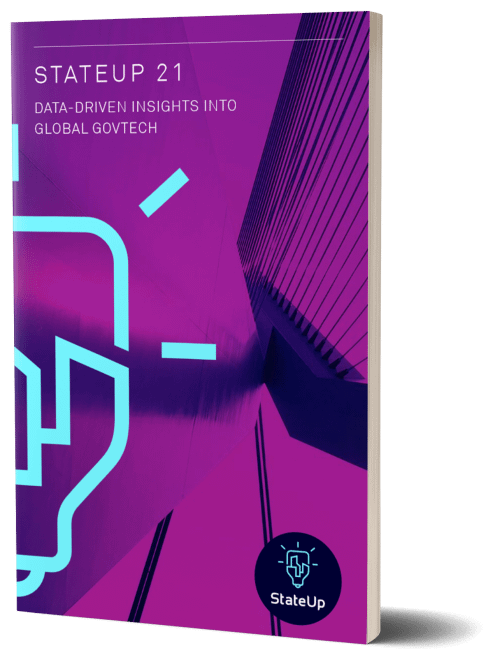Public-Purpose Technology Intelligence
Summary
This information is accurate as of January 2021. For more up-to-date information, access Nebula, our Public-Purpose Tech intelligence platform. Join with our Nebula Community Membership, or upgrade to a Nebula Pro Membership.
- Founded in 2014
- Total funding £124.8 million
- Latest funding round: Series C, £74.9 million
- Revenue band: Not supplied
- Lead investors include Addition, Ribbit Capital, Sound Ventures, MUFG Innovation Partners, Sozo Ventures, Accel, Techstars
- Offices: NY, US (HQ); D.C., US; Tokyo, Japan; London, UK; Copenhagen, Denmark; Singapore
- FTEs: 51-200
- Key clients/partners: Europol's European Cybercrime Centre; US Government Agencies (FinCEN, SEC, CFTC, FBI, IRS, DOJ, DEA, USSS etc.); UNODC; Barclays
- Key executives: Michael Gronager, CEO and co-founder: PhD Quantum Mechanics, Technical University of Denmark; previously Advisor at Kraken Bitcoin Exchange; Jonathan Levin, CSO and co-founder: MPhil Economics, University of Oxford; previously CEO and co-founder of Coinometrics.
Profile
That regulation lags innovation is a stylized fact. With blockchain, this lag is pronounced. Many blockchain applications are decentralized, (pseudo) anonymous, and cryptographically secured. These features underpin blockchain’s innovative internal regulation, but also make it uniquely difficult to govern. Most blockchain applications are alternatives to fiat currency, called cryptocurrency. Here, regulatory lag meets a broad scope for abuse; high-stakes heists, like the 2018 crypto exchange hacks amounting to $1 billion, are the result.
Chainalysis has seized upon this lag as a problem-solving, income-generating opportunity. Its products ease mapping and assessing blockchain transactions. For regulators it offers Reactor, a forensic investigation tool. Reactor enables law enforcement to link cryptocurrency addresses and transactions to real entities. Reactor’s graph visualization feature maps crypto assets’ paths of travel, complete with the ability to build a narrative through annotations. Its Know-Your- Transaction (KYT) product targets private financial players conducting crypto transactions. It enables them to identify and prevent risky deposits and withdrawals in real-time.
Chainalysis stands to gain from an uptick in positive regulation around cryptocurrency. Most notably, the Financial Action Task Force released guidance on regulating digital assets in 2019, leading to a flurry of national regulations in 2020. Chainalysis arguably laid some of the groundwork for this shift–by showing that the most egregious misuses of cryptocurrencies could be consistently tackled, it set the stage for rules governing more mundane practices. An upsurge in illicit uses of cryptocurrency has also boosted government demand for its product.
Plans
Growing its policy and business teams in response to increased government demand for its products.
Who Should Speak To This Company
Government agencies that oversee financial transactions; cryptocurrency exchanges and wallets; hedge funds, banks and asset managers.
Company In Action
Darknet markets facilitate transactions, usually of illicit goods, over the dark web, encrypted online content that does not show up on conventional search engines. The Silk Road was the first major darknet market and was shut down by US law enforcement in 2013. It is now defunct, but large amounts of cryptocurrency still exist in Silk Road linked wallets.
 Image from Chainalysis Website. This image shows the path of travel of the seized funds, from the Silk Road Marketplace to the government controlled wallet, “Silk Road Marketplace Seized Funds 2020-11-03”.
In November 2020, IRS investigators used Reactor to discover and seize one such wallet holding 69,370 Bitcoin (BTC), more than $1 billion at the time of seizure. Reactor’s entity linking feature enabled investigators to discover that these funds had been stolen from the Silk Road darknet by a hacker, “individual X”. The graph visualization feature mapped further aspects of individual X’s activity, such as his 2015 withdrawal of 101 BTC via a now- defunct exchange, BTC-e.com.
Image from Chainalysis Website. This image shows the path of travel of the seized funds, from the Silk Road Marketplace to the government controlled wallet, “Silk Road Marketplace Seized Funds 2020-11-03”.
In November 2020, IRS investigators used Reactor to discover and seize one such wallet holding 69,370 Bitcoin (BTC), more than $1 billion at the time of seizure. Reactor’s entity linking feature enabled investigators to discover that these funds had been stolen from the Silk Road darknet by a hacker, “individual X”. The graph visualization feature mapped further aspects of individual X’s activity, such as his 2015 withdrawal of 101 BTC via a now- defunct exchange, BTC-e.com.
 Image from Chainalysis Website. This image shows the path of travel of the seized funds, from the Silk Road Marketplace to the government controlled wallet, “Silk Road Marketplace Seized Funds 2020-11-03”.
In November 2020, IRS investigators used Reactor to discover and seize one such wallet holding 69,370 Bitcoin (BTC), more than $1 billion at the time of seizure. Reactor’s entity linking feature enabled investigators to discover that these funds had been stolen from the Silk Road darknet by a hacker, “individual X”. The graph visualization feature mapped further aspects of individual X’s activity, such as his 2015 withdrawal of 101 BTC via a now- defunct exchange, BTC-e.com.
Image from Chainalysis Website. This image shows the path of travel of the seized funds, from the Silk Road Marketplace to the government controlled wallet, “Silk Road Marketplace Seized Funds 2020-11-03”.
In November 2020, IRS investigators used Reactor to discover and seize one such wallet holding 69,370 Bitcoin (BTC), more than $1 billion at the time of seizure. Reactor’s entity linking feature enabled investigators to discover that these funds had been stolen from the Silk Road darknet by a hacker, “individual X”. The graph visualization feature mapped further aspects of individual X’s activity, such as his 2015 withdrawal of 101 BTC via a now- defunct exchange, BTC-e.com.StateUp View
Benchmark, a lead investor in Chainalysis, called its decision to invest a no brainer. We agree–Chainalysis combines public market dominance with strong growth in private sector clients. It is not slowing–we sense a product ecosystem play with its recently launched Asset Realization Programme (ARP). ARP involves helping clients file and sell confiscated cryptocurrencies, a natural next step for Reactor users.
However, Chainalysis may face difficulty landing cryptocurrency exchanges and wallets as customers. Reactor enables de-anonymizing cryptocurrency users; for exchanges and wallets sharing blockchain pioneers’ anti-surveillance ideology, this is unpalatable. When Coinbase, an exchange selling a Reactor substitute, won a government contract, BTC and key clients left its exchange in response. Elliptic, Chainalysis’ strongest competitor, flagged this as a key difference between both companies; it claims to not provide de-anonymizing functionality for privacy-focused cryptocurrency. Elliptic’s strongest segment is crypto exchanges and wallets.
While this challenge is serious, we believe Chainalysis’ trend is net positive. Chainalysis has ample room for growth, including with public and traditional financial clients.

Get Access To The Full Report
- Discover data-driven insights into key GovTech subsectors and technologies
- Learn how investment into GovTech is changing
- Read the full StateUp 21 member profiles


